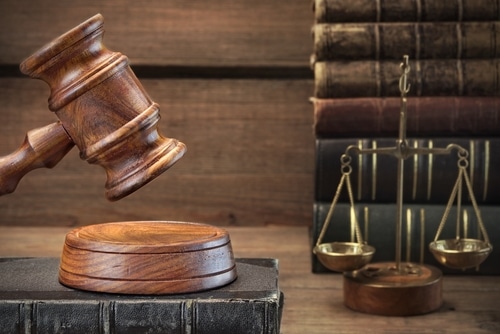
Some Supreme Court cases have had a tremendous and lasting impact on U.S. history. You can be certain you’ll see some of these landmark cases on the AP exam. Here are 10 APUSH court cases to know for test day.
1. Marbury v. Madison
Year:
1803
Why It’s Important:
This case established the Supreme Court’s power of judicial review—the power to determine whether or not a law or other government action is constitutional. This power has become part of the “unwritten Constitution” and one of the Supreme Court’s most important roles.
2. Gibbons v. Ogden
Year:
1824
Why It’s Important:
The court decided that the federal government only (not the states) had the right to control interstate commerce.
3. Dred Scott v. Sandford
Year:
1857
Why It’s Important:
Dred Scott was a slave who sued for his freedom after his master moved him into a free territory. The Supreme Court ruled against Scott. The ruling had these three major points:
- Slaves were not U.S. citizens, so they had no right to sue.
- Slaves are property and the government cannot take away a man’s property (or prevent him from moving with it). Therefore, Congress cannot ban slavery in the territories. This made the Missouri Compromise of 1820 null and void.
- The federal government does not have the right to free slaves brought into the territories.
4. Plessy v. Ferguson
Year:
1896
Why It’s Important:
This case gave the legal green light to “separate but equal” public facilities for blacks and whites. It legitimized the Jim Crow segregation laws that would characterize racial policy for the next half-century. Learn more about Plessy v. Ferguson here.
5. Korematsu v. US
Year:
1944
Why It’s Important:
The Supreme Court ruled that interning Japanese-Americans during World War II, even those who were citizens born in the U.S., was legal.
6. Brown v. Board of Education
Year:
1954
Why It’s Important:
Essentially undoing Plessy v. Ferguson, the Supreme Court ruled this time that “separate but equal” facilities for blacks and whites were “inherently unequal.” This case outlawed racial segregation of public schools and paved the way for the integration of other areas as well.
7. Gideon v. Wainwright
Year:
1963
Why It’s Important:
This decision expanded the guarantees of the Bill of Rights by ruling that the 6th Amendment right to an attorney regardless of ability to pay applies to state cases as well as federal ones.
8. Miranda v. Arizona
Year:
1966
Why It’s Important:
This case is designed to make sure that those accused of a crime know their rights before they are interrogated by police. You’ve probably seen tons of movies and tv shows where someone is being arrested and the officer tells them, “You have the right to remain silent. Anything you say can and will be used against you in a court of law. You have the right to an attorney. If you cannot afford an attorney, one will be provided for you.” This is known as the “Miranda Warning” or “Miranda Rights” and it is required now thanks to this case.
9. Roe v. Wade
Year:
1973
Why It’s Important:
The Supreme Court used the 4th Amendment as the basis to legalize first trimester abortion. The court ruled that states cannot outlaw abortions during that period. This is one of the most controversial rulings still on the books.
10. US v. Richard Nixon
Year:
1976
Why It’s Important:
During the Watergate scandal, President Richard Nixon tried to assert that his “executive privilege” made him immune from subpoena’s requesting the release of White House audio recordings. The court ruled that Nixon had no such privilege. This case had the lasting impact of asserting that even the president is not above the law.



Leave a Reply